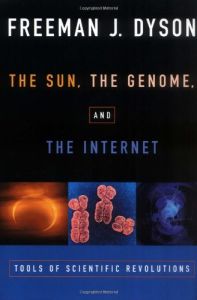Join getAbstract to access the summary!

Join getAbstract to access the summary!
Freeman J. Dyson
The Sun, The Genome and the Internet
Tools of Scientific Revolutions
Oxford UP, 1999
What's inside?
Futurists and science fiction writers described air travel, space flight and the Internet years before any of these things became reality. So when a noted Princeton professor starts talking about forests of energy-producing trees, we think you should listen.
Recommendation
Think of this book as an engaging evening with a rather authoritarian dreamer who happens to be a distinguished scientist. Based on a series of lectures delivered at the New York Public Library in the late 1990s, the book rambles through a variegated terrain of technology, history, ethics, philosophy and family pride. It is about thinking more than it is about ideas, about wondering more than it is about thinking. Jules Verne and H.G. Wells figure prominently in the bibliography, but so do serious historians of science. getAbstract.com recommends this slender and elegantly written book for everyone with an interest in science and a sense of the marvelous.
Summary
About the Author
Freeman J. Dyson is Professor Emeritus of Physics at the Institute for Advanced Study, Princeton University. He is the author of Disturbing the Universe, Infinite in All Directions, Weapons and Hope, and many other books. He is a recipient of the National Book Critics Circle Award and the Phi Beta Kappa Award in science, among many other honors. He lives in Princeton, N.J.
















Comment on this summary